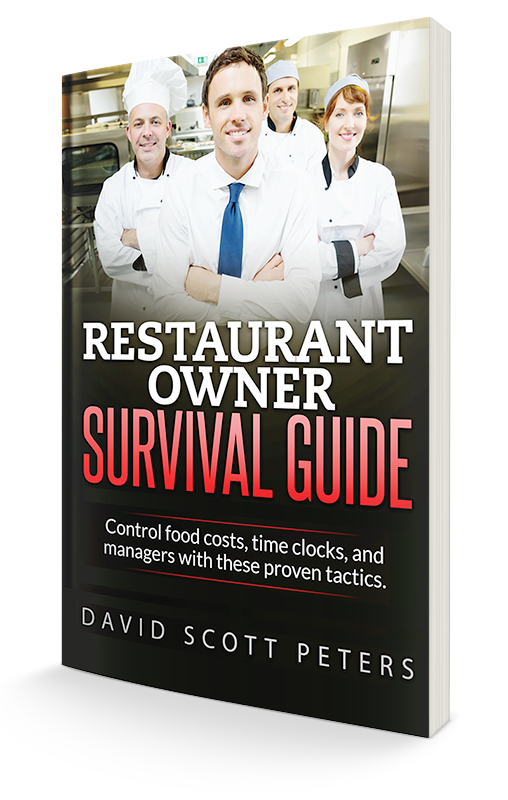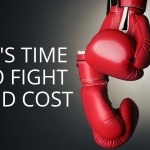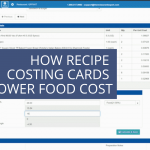How Taking Inventory Lowers Food Cost
I was taught pretty early that consistently taking inventory lowers food cost. A manager walked me into a walk-in cooler and asked, “What do you see on the shelves?”
I started listing what I could see on the shelves, but I was stopped short and told the only right answer, which was, “Money!”
This was a very important lesson and one I encourage anyone who owns, manages or works in a restaurant to learn. Inventory is money! It’s money sitting on your shelves that you can’t even pay your bills with. For example, you need $2,500 for your power bill and it’s not in your bank account. But you do have $2,500 in steaks, seafood and poultry sitting on your shelves in the walk-in. The sad reality is you can’t walk into your power company’s billing office and dolly in cases of product and say, “let’s call it even.”
Not only do you not have the cash in the bank, if you have too much restaurant inventory on your shelves, you’re also more likely to fall victim to employee theft. With so much stuff sitting on the shelves, you’d barely notice it was missing. Or maybe the worst is it can just plain spoil. These are key factors to how inventory lowers food cost.
How are you supposed to know how much is too much? You have to calculate, know and manage your turns.
What is a turn?
I want you to picture that your shelves are completely stocked with food. You open your doors for business and by the end of the day they are completely empty. A delivery comes in the next morning to fill them completely up again. This is a turn, the process of completely emptying your stocked shelves and restocking them.
Now, you might be saying to yourself, “That works in theory, but I know I have items on my shelves that have been there for months, such as spices. And I know I have items that I replace almost daily, such as dairy and fresh vegetables. How do I know when I have turned my inventory when my shelves are never empty?”
The answer is easy. Now that you understand what a turn is, change the definition so that a restaurant inventory turn is the dollar value in product turns. Simply put, if you have $5,000 of food on your shelves, when you have used $5,000 in product (translation: it’s actually left your shelves), that is considered a turn, no matter how many days it takes.
How do you calculate an inventory turn?
Inventory turns are calculated by dividing the dollar value of the product use (you should be calculating this monthly to know what your food cost is) by your average inventory (which is simply taking your beginning inventory plus your ending inventory and dividing it by two). The final calculation for inventory turns looks like this: [use ÷ average inventory]. This number measures how efficient a restaurant is with its cash and inventory.
For example, in most cases the kitchen of a full-service restaurant wants to achieve four to six inventory turns a month, eight for a breakfast place. If the inventory is turned four times in a month, in theory that means you will sell all of your product on the shelves and re-stock them four times and you will be placing a food order only once a week.
When four turns are achieved and you’re ordering twice a week, you only have enough food on your shelves for three to four days of business. This makes your operation extremely efficient. The key to successful inventory turns is the more turns you can achieve the better use of your money. Once again, consistent inventory lowers food cost.
What are some other benefits to turning your restaurant inventory more often?
- You will reduce your risk of theft because you can immediately see when items are missing. Everything has its place.
- You will operate a cleaner restaurant, which translates into better health department scores.
- With less inventory on the shelves, you will have more cash in the bank to pay bills, like that $2,500 power bill.
- And last but not least, calculating inventory turns can be a key to ordering properly to hit your budget.
So, the next time you walk into your cooler, ask yourself, “What do I see?” If the answer is just the right amount of money, your bank account will thank you. Plus, you’ll have little to no theft and spoilage. Regular inventory lowers food cost!
If you’d like to learn more about how inventory lowers food cost and how to do it in your restaurant in under an hour each week, request a free demo of our restaurant management software, Restaurant Systems Pro.
For more systems you can use to lower food cost in your restaurant, download our free report, 3 Simple Systems to Cut Food Cost 2-3% Overnight. You can also view tips to lower food cost in your restaurant on this YouTube channel playlist.





